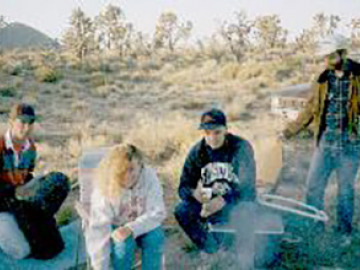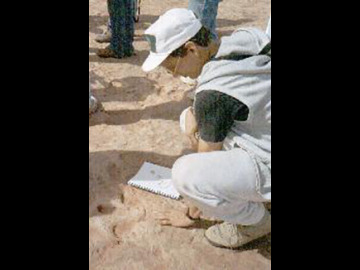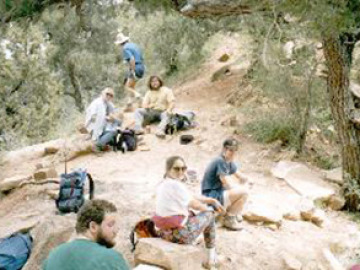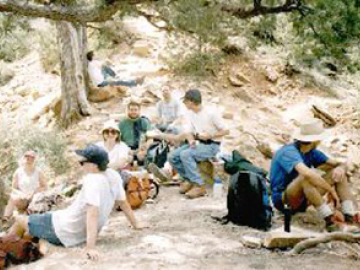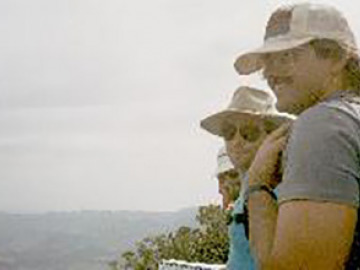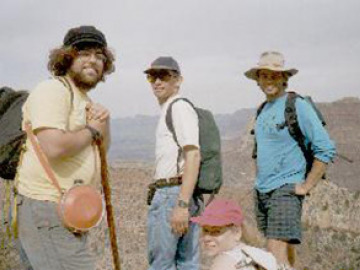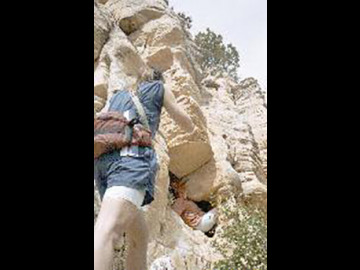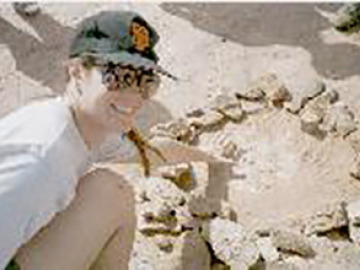April 15-18, 1994
The Grand Canyon is Arizona's most well-known feature. It was formed as the Colorado River downcut into the sedimentary rocks of the Colorado Plateau in northern Arizona and southern Utah. Though Grand Canyon is awesomely huge by human standards, it pales in comparison to Vallis Marinaris, a deep and extensive canyon network covering a portion of Mars about the length of the entire United States. Understanding how canyon systems are formed and what can be discovered by studying these systems was the main goal of this trip.
We set the scene with discussions of river mechanics and uplift mechanisms, then hiked down into the canyon along Grandview trail/Horsehoe Mesa from the south rim. Along this beautiful hike, we learned about the geologic history of the Colorado River, mass wasting processes, historic landslides, gradualism vs. catastrophism in the carving process, faulting processes, and the Paleozoic stratigraphy exhibited in the walls of the canyon. That evening, we heard the history of exploration of the Grand Canyon.
Other stops on this trip were to the breathtaking Quartermaster overlook of the Lower Colorado River where rapids were visible, the Peach Springs Tuff, aeolian features at Paiute Trail Point, and the ever-popular Red Lake Playa and the Giant Dessication Polygons! A special stop in Tuba City enabled us to get "hands on" with Early Jurassic dinosaur footprints and trails. We wrapped up the trip with a stop at the Museum of Northern Arizona to learn more about fossil dinosaurs in Arizona.


